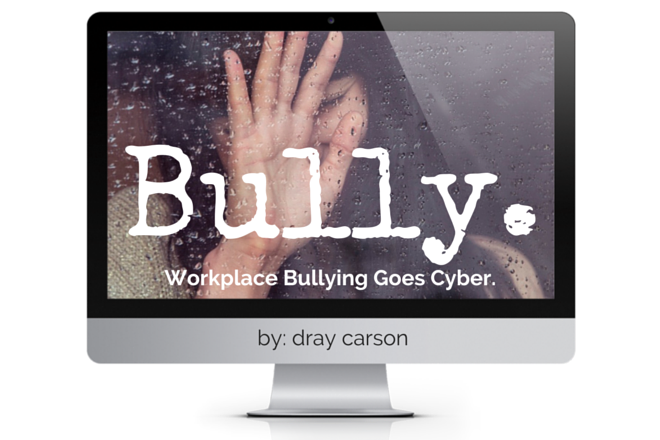Workplace Bullying Goes Cyber
As a kid I was teased, made fun of, and well, bullied. Not fun. I thought that was something that only happened in your formative years.
However, in more recent times I had been introduced to the concept of cyber-bullying, firsthand.
My impression was that cyberbullying occurred amongst teenagers due to their constant day-to-day activities online. With the evolution of technology over the years, and the introduction of social media, my thought was that the battles on the playground had transitioned into a virtual place.
Not so. Bullying knows no age limits.
And while nearly 43% of kids have been bullied online, and one in four had it happen multiple times, I was shocked to find out firsthand that cyberbullying is also something adults could be faced with, both in their personal and professional lives.
From Being Cyberbullied to Raising Awareness
I had an experience where a co-worker was bullying me in the office, and making my life a complete hell.
I thought that leaving that company would leave the bully behind. I was wrong. And while my superiors did little to stop this harassment while I was working, there was even less they could do when he turned invisible and started harassing me virtually after I left the company.
It was not a fun experience, and one that I am still rebuilding from.
Now I’m a Business Advisor in the Human Resources industry, I have witnessed similar situations like this happen to people all too frequently.
Repeatedly, I have conversations with clients surrounding their ‘Internet harassment policy’, which is also referred to as “cyberbullying”. In essence, this is the term used to describe the use of the Internet to harass, threaten, or maliciously embarrass.
It’s crazy to think as grown adults, we have monitor and spell out for people that it is not cool to harass someone (at all), let alone through social media or texting.
So, What is Considered Cyberbullying?
Here are some examples of behaviors that would be considered cyberbullying:
- Sending unsolicited and/or threatening e-mail.
- Encouraging others to send the victim unsolicited and/or threatening e-mail or to overwhelm the victim with e-mail messages.
- Sending viruses by e-mail (electronic sabotage).
- Spreading rumours.
- Making defamatory comments about the victim in public discussion areas.
- Sending negative messages directly to the victim.
- Impersonating the victim online by sending an inflammatory, controversial or enticing message which causes others to respond negatively to the victim.
- Harassing the victim during a live chat.
- Leaving abusive messages on Web site guest books.
- Sending the victim pornography or other graphic material that is knowingly offensive.
- Creating a Web page or writing an entry on a blog that depicts the victim in negative ways.
As this is a relatively new topic in the workplace, it is common to see employers include cyberbullying into their general workplace bullying policy. And while this is a good step in the right direction, this topic does justify a standalone policy.
A recent study by VitalSmarts, a leadership consultancy founded by David Maxwell, author of the book Crucial Conversations, polled nearly 3,000 people on the topic of workplace bullying.
A shocking 96% of respondents indicated they’d been bullied in the workplace. You may also be surprised to know that 62% of bullying came in the form of sabotaging work and/or reputation; 52% in ‘browbeating, threats and intimidation’, and 4% in actual physical assault.
The Changing Landscape of the Work Environment
The workplace now has a crucial impact in determining what is acceptable and what is unacceptable to say or do to another staff member.
Just as it is difficult for kids to report to authorities when they are being bullied, the same situation may arise in the workplace. In other words, culture is everything. So too, is creating a strong policy. It is vital that companies create a strong environment that is intolerant of this type of behavior.
And while you cannot completely control what others will say about you online, you can grant people you do not know limited access to your information.
Now, if you happen to be in the same situation as I was with an invisible cyberbully, don’t keep quiet about it, as silence is not the answer. Let your authorities know, and reach out to the platforms that the harassment is taking place at.
More and more social media platforms are realizing that there is a difference between ‘freedom of speech’ and harassment, and are adopting a zero tolerance to cyberbullying. Reporting the abuse could result in them shutting down those accounts.
For those in charge of human resources or direct hiring, you can reach out to a Human Resources company to find out examples of policies and procedures that you can implement in order to create an environment where your staff feels safe and valued.


Recent Comments